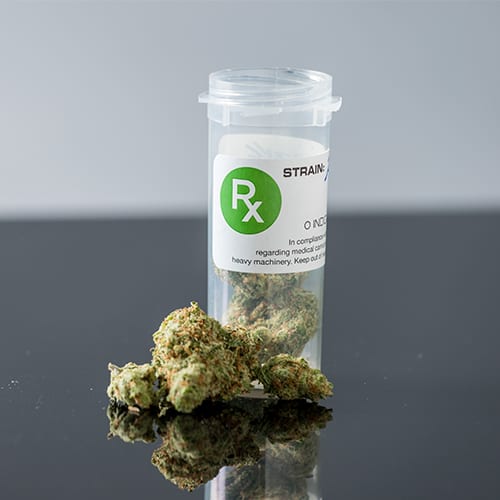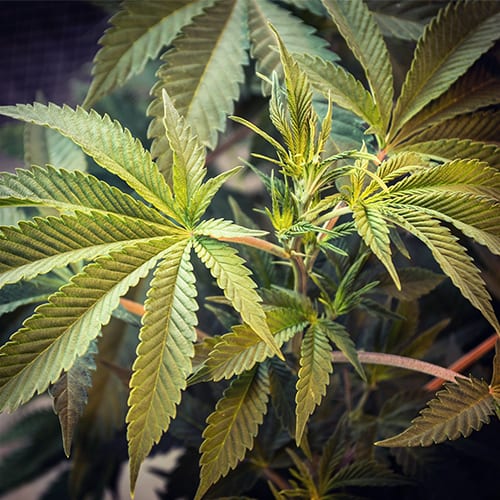
BRIDGEPORT — Robert Ticer is no fan of legalized recreational marijuana.
And the Avon, Colo., police chief said Thursday that more pot in Connecticut’s future would increase challenges for cops on this state’s roads.
“It’s mind-boggling,” he said of marijuana’s spread through Colorado, speaking at the Webster Bank Arena as part of a traffic safety summit. “It’s crazy.”
Full legalization was approved as a Colorado constitutional amendment in 2013, and there are now 505 medical dispensaries and 322 retail stores selling recreational cannabis — outnumbering the 405 Starbucks stores and 227 McDonald’s — Ticer said.
Legalization of marijuana may be just around the corner in Connecticut, where medical cannabis was legalized in 2012. The veteran Colorado chief told cops at the Webster Arena summit, sponsored by the state Department of Transportation, to prepare for the consequences.
“The intent of people looking to legalize marijuana is to legalize marijuana,” Ticer said. “One of the first steps they do, the industry, is to start with medical marijuana, then the next step is recreational marijuana. They have a strategy that’s similar, state-to-state.”
Bridgeport police Chief Joseph Gaudett said he has “a feeling” that the state is heading toward full recreational use of marijuana for adults.
“It’ll be interesting to see the issues that go along with that,” Gaudett said during welcoming remarks.
Ticer advised police in Connecticut to lobby against the expansion of the state’s medical marijuana program and to build coalitions if or when full recreational use becomes the law. Police have to be ready to fight for more enforcement funding, he said, and to enlist the marijuana industry itself to partner in raising the awareness of the public about driving while stoned.
Marijuana growers and distributors in Colorado have underwritten a series of witty public service announcements aimed at keeping stoned people in their homes and away from their cars. While high drivers present particular challenges, there are things police can do “to set yourself up for success,” Ticer said.
Blood tests for checking violations of THC levels may be problematic because marijuana’s psychoactive ingredients can quickly dissipate between the time a motorist is stopped and when they are ordered to have blood drawn in nearby hospitals. But stoned drivers often make it easy for police, Ticer said, by also being under the influence of alcohol, making it easier and quicker to test and arrest.
Connecticut Deputy Chief State’s Attorney Leonard C. Boyle, a former federal prosecutor and former state commissioner of public safety, said that if the law changes, police and prosecutors will have to adapt.
“Don’t you hate the term ‘recreational’ marijuana?” Boyle asked. “Recreation is bowling, right? Or golf. Recreational marijuana just never sat very well with me, but you know we live in a world that changes all the time and part of what we have to do is accept that.”
After the summit, local police officials said they haven’t noticed a decrease in traffic safety linked to medical marijuana users. Danbury police Chief Al Baker, in a phone interview, said that because Connecticut has tightly regulated the medical marijuana program, he believes patients are using the drug with care.
“We have not seen any problems,” Baker said. “I think people who are using medical marijuana here in Connecticut are very responsible.”
In Greenwich, police Lt. Kraig Gray, the department’s public information officer, said that since possession of small amounts of marijuana became infractions rather than misdemeanors in 2011, he rarely sees reports of pot possession. The department has a specially trained Drug Recognition Expert, one of only 19 in the state, who assists on traffic-related investigations.
Gaudett said that while overall city crime continues to decline, traffic safety becomes more of a priority.
“We’re encouraging our officers to use more of their time to conduct traffic enforcement,” he said, noting that the department is down 100 positions compared to just a few years ago. “But it’s not just about enforcement. It’s about traffic calming.”
Later in the program, which included an afternoon awards ceremony, researchers from the University of Connecticut detailed Bridgeport’s 3,550 vehicular crashes this year, including a digital record system and an interactive map that indicated the most dangerous intersection is East Washington Avenue and Housatonic Avenue.
Blair Anderson, deputy administrator for the National Highway Traffic Safety Administration, said Connecticut is a model for the nation in many ways, having nearly cut the number of vehicular fatalities in half since 2010.
For three years, it has been the only state to qualify for federal distracted-driving grants, Anderson said.
By Ken Dixon, CTpost.com





